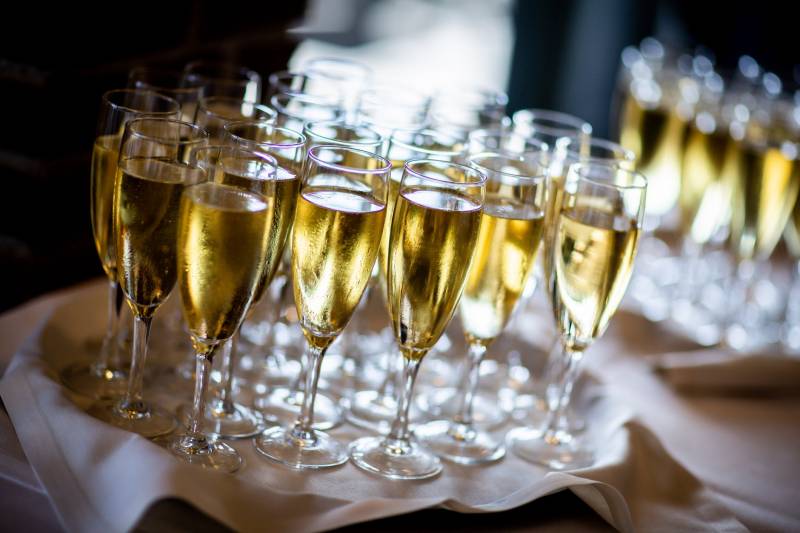It bubbly wine it is one of the most consumed drinks during the holiday season and, of course, the protagonist of the celebrations of New Year’s. The Uiv-Ismea Observatory (Unione Italiana Vini) has estimated that on New Year’s Eve approximately 316 million Made in Italy bottles will be uncorked all over the world: an absolute record.
Yet not many know that bubbles, in addition to being auspicious for the new year, are a real panacea for the salute of the over 60. Recent investigations have found that, if consumed in moderation, sparkling wine can bring numerous benefits by inducing a state of general well-being. Let’s find out what they are.
Nutritional characteristics of the sparkling wine
Since time immemorial, sparkling wine has been known for its healing properties. In ancient times, for example, it was used to clean skin wounds from the presence of waste. Studies dating back to the middle of the last century have ascertained that this drink promotes digestion, considering a high amount of carbon dioxide in its chemical composition.
Coming fully into the category of wines, the sparkling wine is also rich in polyphenols e vitamins of group B which act as natural antioxidants. Specifically, a quantity equal to about 100 ml of product contains – in increasing order of concentration – the following macronutrients:
- water;
- carbohydrates (of which 0.60 grams of sugars);
- minerals (potassium, sodium, iron, calcium, zinc and copper);
- B vitamins (thiamin, riboflavin, pentothenic acid and niacin).
It goes without saying that, being a alcoholic beverage, consists mostly of alcohol, present in an amount equal to 93.8% of the overall chemical composition. Therefore, a decidedly moderate consumption is always recommended.
Benefits of sparkling wine for seniors

In spite of commonplaces, sparkling wine can have beneficial effects on the health of senior. Contrary to spirits – cocktails or liqueurs – bubbles boast numerous benefits for the organism. Generally speaking, studies conducted in recent years have determined that:
- Promotes the digestion. The amount of organic acids present in this drink contributes significantly to optimizing the digestive process, especially after a substantial meal;
- Reconcile the sleep. The zinc and potassium contained in the sparkling wine favor night rest by acting as natural supplements against insomnia;
- Strengthens the immunitary defense. The minerals and proteins in this drink – about 50 in total – strengthen the immune system;
- It performs an action cardioprotective. Trisol, like the other polyphenols contained in sparkling wine, is a natural antioxidant with heart-healthy properties;
- It has an action draining and diuretic. The water contained in the bubbles is able to stimulate lymphatic circulation avoiding the stagnation of the so-called “excess liquids” in the body.
- Contrast the depression. Minerals such as lithium soothe anxiety by generating a feeling of relaxation and well-being.
Finally, the sparkling wine also boasts remarkable aphrodisiac properties. Thymol and niacin act on the hypothalamus, the area of the brain responsible for producing sex hormones. One more reason not to give up the toast.
How much sparkling wine to drink at the age of 60?

Once the beneficial properties of the sparkling wine have been ascertained, one other aspect remains to be clarified: that relating to the quantities and mode of consumption. If you have exceeded the threshold of the “doors”, we advise you to write down these last suggestions. With the New Year upon us, they may come in handy.
Let’s start with the good news. Did you know that sparkling wine has a very low impact on the diet? For about 100 ml of bollincine – a flute, to be clear – there are between 80 and 120 calories, significantly less than liqueurs or bitters with the same digestive properties. The caloric intake, it should be noted, varies according to the serving temperature and the type of fermentation.
The bad news is that, being an alcoholic drink, sparkling wine contains a significant amount of sugar. Therefore, it is not recommended for people suffering from diabetes or pathologies that require a strict dietary discipline.
Generally, experts suggest drinking a glass of bollincine (1-2 alcohol units for women and 2-3 for perfectly healthy men) on an occasional basis. Obviously, New Year’s Eve is not text. In that case – and only in that case – a small cheat is allowed
